I flew on Korean Air's Boeing 747 in business from LA to Seoul and the upstairs cabin felt like a private jet
Taylor Rains

- Korean Air was the recipient of the very last Boeing 747-8i passenger plane delivered to an airline.
- The five-star carrier has nine 747-8is in its fleet, each with 368 seats across three cabins.
Korean Air is one of the very few airlines in the world still flying the Boeing 747 jumbo jet, despite many other carriers ditching it during the pandemic.
The Seoul-based airline boasts a fleet of nine 747s — specifically the rare -8i variant, which is the last passenger version Boeing built of its legendary Queen of the Skies.
In 2017, Korean Air was actually the last airline to receive a 747-8i. The five-star airline also flew the 747-400 passenger variant for nearly 50 years before retiring it in 2020, a company spokesperson told Insider.
Equipped with four engines and a second level, Korean's 747-8i can carry up to 368 passengers across three classes: first, business, and economy.
After flying on Singapore Airlines and Japan's All Nippon Airways earlier this year, I decided to try out Korean's 747 "Prestige" business class from Los Angeles to Seoul.
Similar seats are also on Korean's mammoth Airbus A380s that also fly the route, but I couldn't resist the nostalgia of the 747.
Here's what my 12-hour journey was like.
My journey started at Los Angeles International Airport at around 8:00 p.m. for my 11:30 p.m. flight.
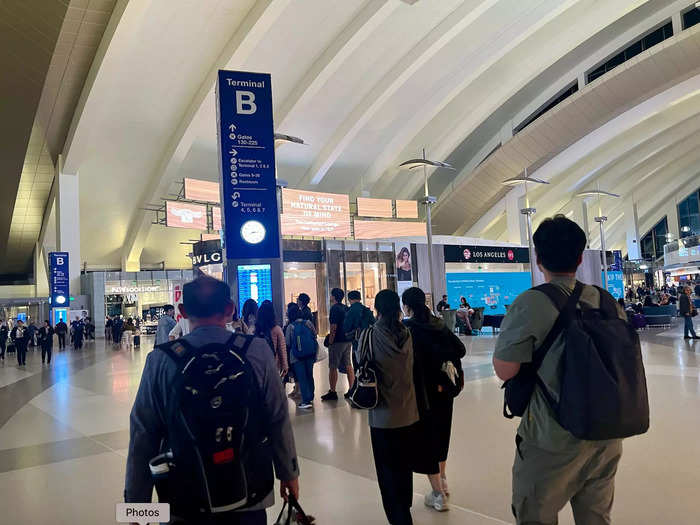
Korean Air flies out of the Tom Bradley International Terminal, also known as Terminal B, alongside a dozen other major international carriers, like Qatar Airways, China Southern Airways, Japan Airlines, British Airways, and Australia's Qantas.
With a big roller bag and my Prestige ticket in hand (which Insider paid a media rate for), I headed to Korean's dedicated business class check-in counter.
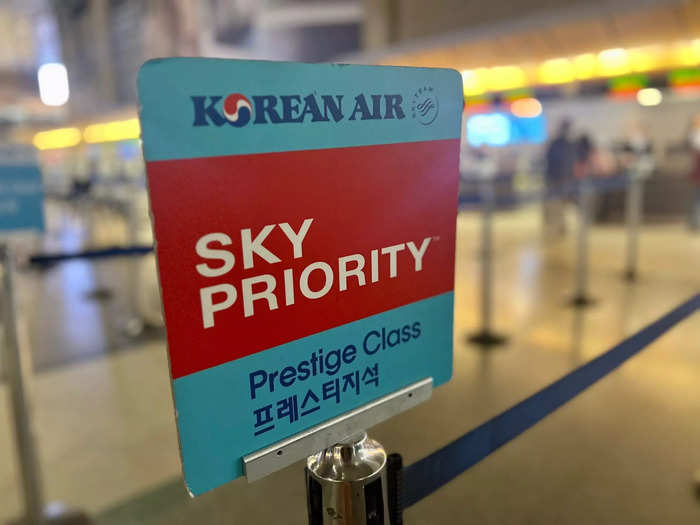
As Korean does not have a premium economy cabin, it has three separate lines for economy, business, and first — the norm for most carriers to elevate the experience for their highest-paying customers.
Travelers can also check-in online and retrieve their boarding passes that way — which I did. However, I still needed to visit the counter to check my luggage, which was well within the 66-pound weight limit.
After dropping my bag, I made my way to security and was through the checkpoint in less than five minutes thanks to TSA PreCheck.
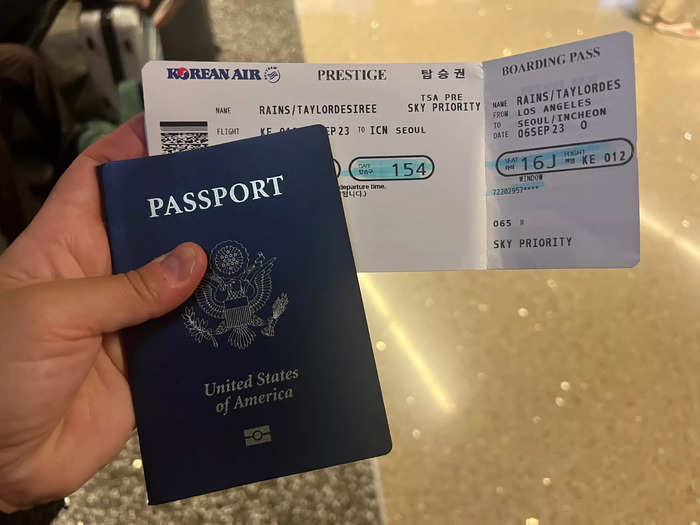
I have had TSA PreCheck — and Global Entry for that matter — for more than five years now, and both are easily two of the best investments I've ever made.
I rarely spend more than 10 minutes in a security queue or at passport control, and I like not having to remove my laptop or shoes.
With still two hours until boarding, I killed time at Korean's Prestige Lounge.

While very basic, the airline had plenty of seating and a few food options, like chicken, fruit, and mini sandwiches.
There was also a deck overlooking the terminal.
After chowing on some orange chicken and listening to a few podcasts, I headed to Gate 154 for boarding.

The Korean lounge was not far from the gate, though passengers will need to traverse a few walkways to get there, which took me just a few minutes to do.
The excitement set in once I saw the massive 747 — a plane I hadn't flown on since 2018 when I flew on British Airways from Las Vegas to London.
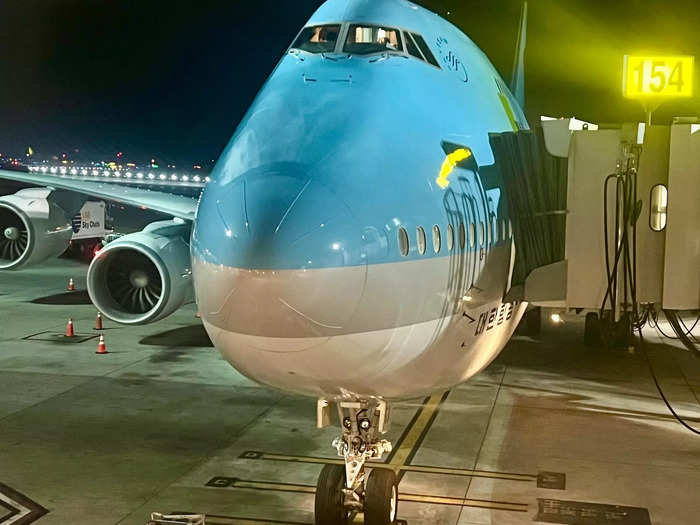
British Airways no longer flies the 747, unfortunately — though others like Lufthansa and Air China still do.
It's not a surprise many 747s left the skies during the pandemic, though. The fuel-hungry quad-engines make the operational costs higher than twin-engine widebodies, meaning it was already inefficient to operate pre-pandemic.
But the sudden halt in travel in March 2020 was the nail in the coffin that sent the iconic plane to boneyards across the world — so it's a huge treat to fly on one in 2023 considering only a few of the passenger variant land on US soil every day.
As a Prestige passenger, I boarded behind first class and ahead of economy — meaning I was on the plane ahead of some 300 people also flying to Seoul.
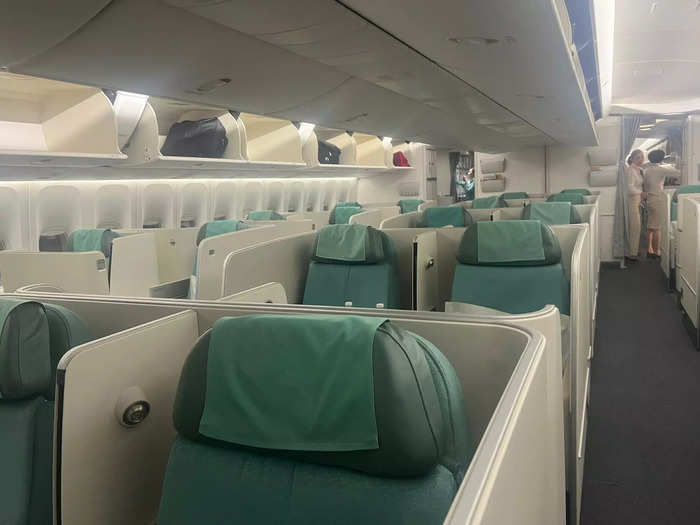
Priority boarding is a huge perk when traveling on a giant double-decker aircraft. I was able to avoid the crowds, jetbridge queue, and overall stress of boarding.
I was also one of the first people off the plane after landing despite being on the upper-level thanks to the flight attendants.
There was a special jetbridge for business and first class passengers that helped with any potential bottlenecks during boarding.
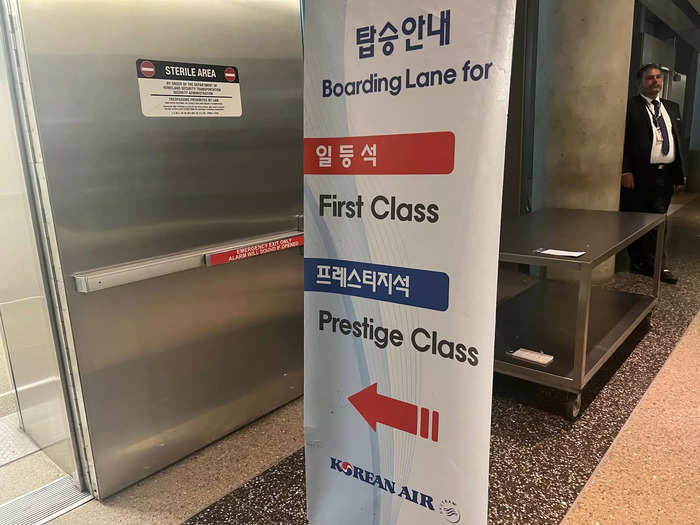
Like the A380, the 747 used several jet bridges to board the aircraft as it's more efficient, with economy passengers enplaning via a door closer to the middle of the plane.
Once onboard, I headed upstairs to the second level via a grand staircase — probably one of the coolest parts of the jet.
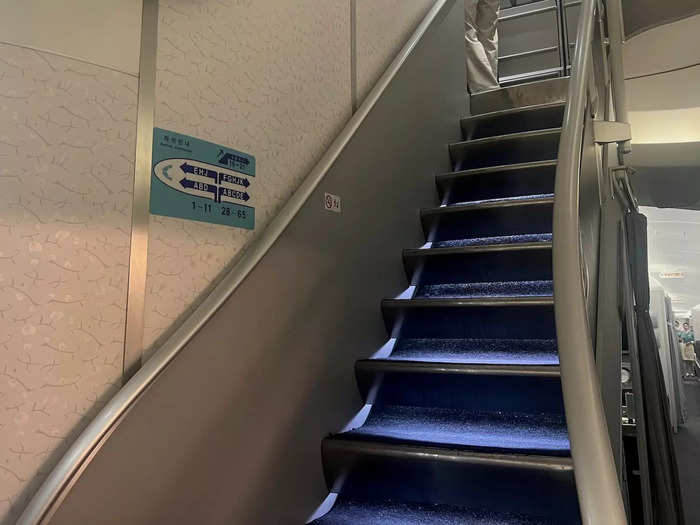
The only way to access the second level was via this staircase as there was no jetbridge connecting upstairs to the terminal.
The staircase leads up to the second level of Korean's 747 where 22 Prestige seats are configured in a 2x2 layout — I was assigned 16J, a window seat in the first row.
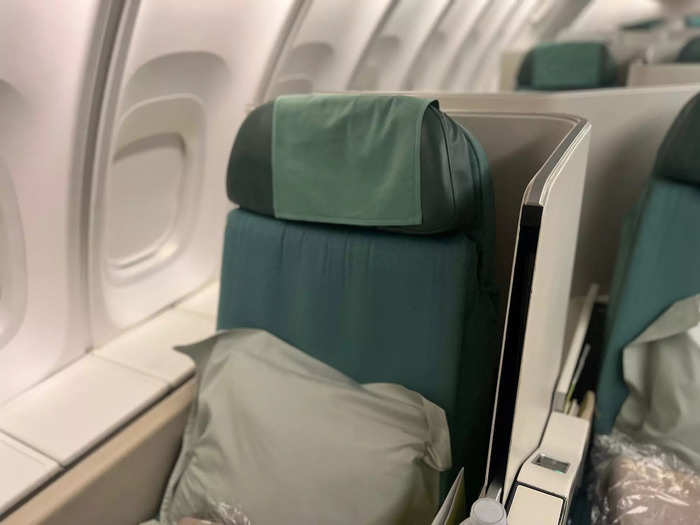
The upper deck layout differs from the lower level because it has fewer seats and no middle section.
The first floor sees business class in a 2x2x2 layout with 26 seats, according to Korean. Both sections have the seats all slightly staggered for added privacy.
Ascending the stairs, I was immediately transported from a crowded widebody plane to something closer to that of a private jet.

The upstairs Prestige section felt extremely private and exclusive with just a few seats, and I was completely separated from the lower section.
This is thanks to the seats being something the industry calls "Apex Suites," and only a few airlines have them.
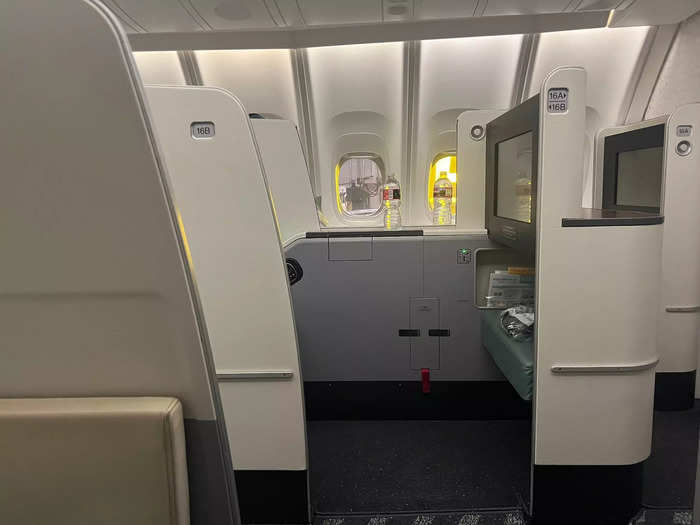
An Apex Suite is a type of business class that allows airlines to pack in more people without sacrificing direct-aisle access for window seat passengers.
They are rare in the industry, though, with only a few carriers like Gulf Air and Japan Airlines using them.
These seats have unique walkways connecting the window to the aisle — making it so that no one is boxed into their 2x2-configured window seat.
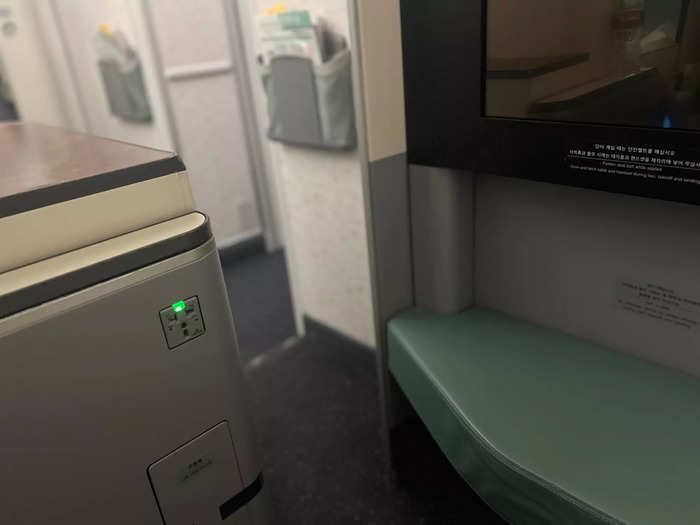
Honestly, it felt more like a little hotel room sitting in seat 16J.
However, it's still not at the same scale as ANA's "The Room" business class, which comes with a full privacy door.
There is also an immense amount of storage space available — and this actually made the seat feel even bigger.
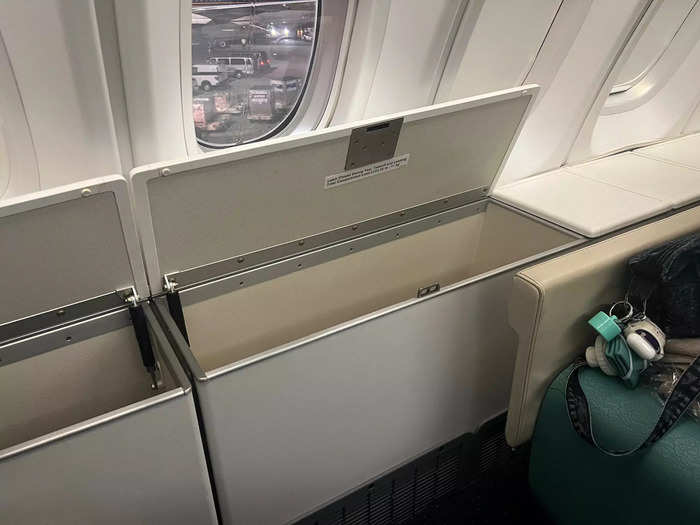
Some airlines, like Condor, have great business class products but lack storage space.
In my experience, the clutter can add up during long-haul flights, leaving the space feeling more cramped than it is.
Inside the two bins, I easily fit my purse, a change of clothes for landing, my pajamas, my toiletries, and the provided linens.
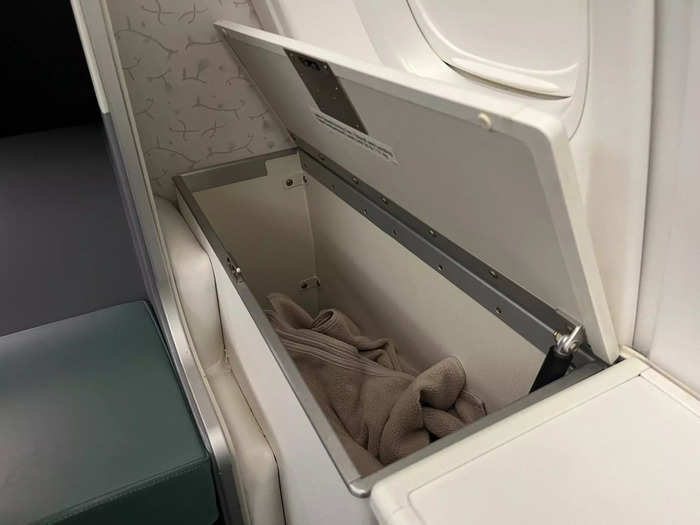
Aisle seat passengers, however, do not have the same space, storage, or privacy as window seat travelers — and that is actually why I made sure to select a window seat when I booked the flight in June.
As far as leg space, I had more than enough room considering I'm just 5'3" tall. But, even the airline's tallest travelers should fit.
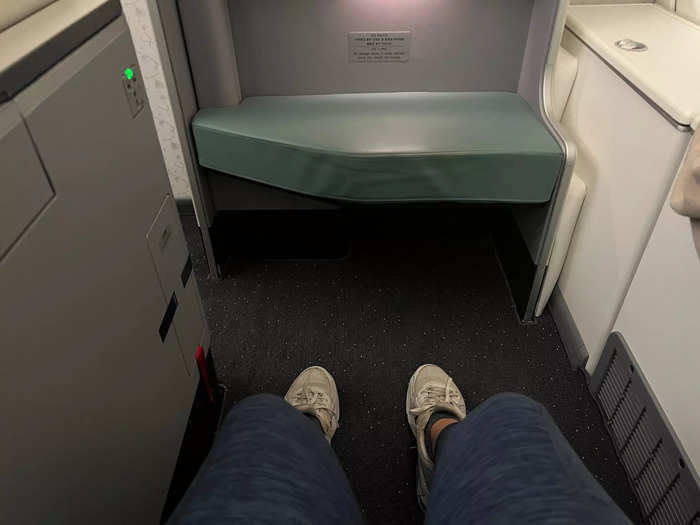
The adjustable seat is a generous 21 inches wide with a 180-degree recline and 75-inch pitch.
Exploring the seat further, I found several other touches like the amenity kit, bottled water, and slippers.
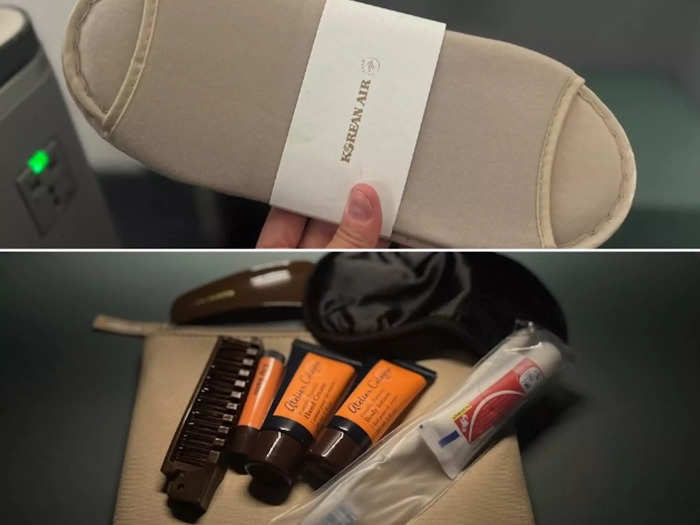
While these perks are typical of most airline business class, I particularly liked the toiletries provided in Korean Air's amenity kit.
A USB port and a universal power outlet were also installed on each seat.
There was also a large, adjustable tray table stored into the armrest of the seat.
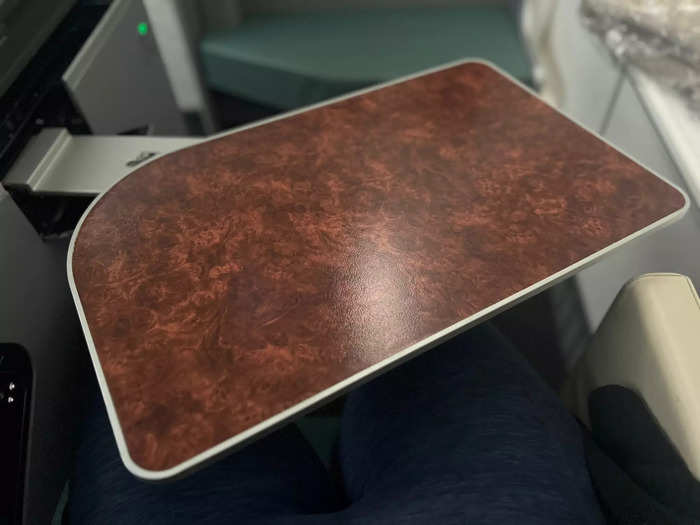
The tray table was easily big enough for a laptop and all of my meals. The storage bins on the side act as another tabletop space when the tray table is in use.
And, I thought the 17-inch seatback screen was nice with plenty of movies and TV shows to choose from — though it was smaller than expected.
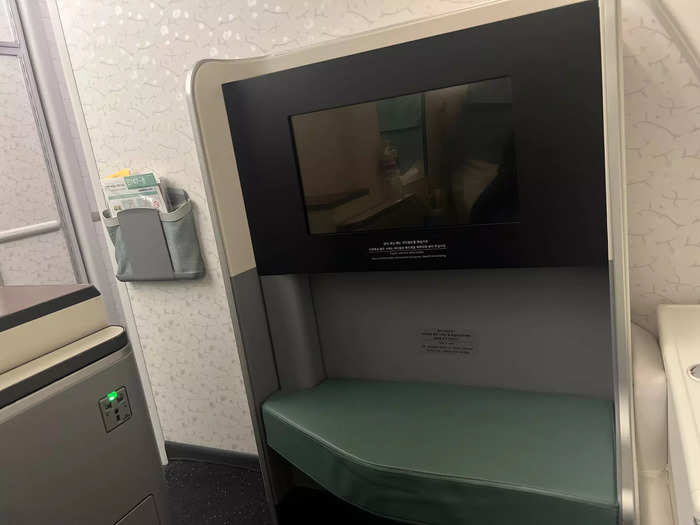
My biggest gripe with the TV was that the screen felt rather basic with simple widgets for movies and shows rather than customized images or a more complex design with clear Korean Air branding.
Plus, the 17-inch width is smaller than ANA's 24-inch TV in its "The Room" business class. Singapore's Airbus A350s feature 18-inch screens in its premium cabin.
To control the TV, there was a convenient remote stored in the side of the seat complete with buttons and a touchscreen pad.
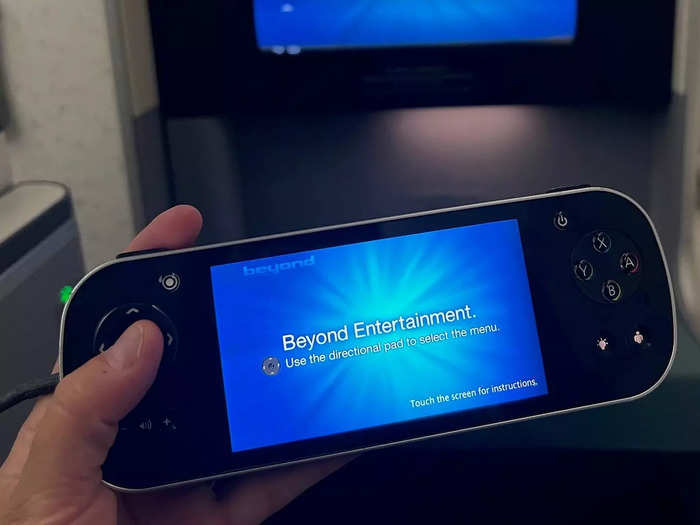
Noise-canceling headphones were also provided, which worked perfectly fine. However, the port can also accommodate wired headphones if you prefer that like me.
However, the remote proved to be a little finicky.
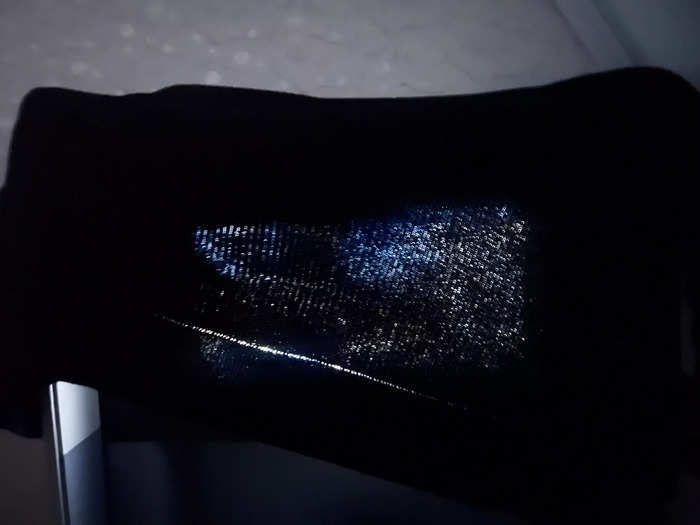
When I tried to go to sleep, I used the remote to turn the monitor off so I wouldn't have a bright screen lighting up my dark little corner nook.
However, the remote would keep re-lighting up automatically without any input from me — triggering the TV to turn back on as well.
I ended up just using my sweater to block the screen (pictured). This was an easy solution, though it was a little annoying that I had to do it.
After exploring my seat, I stored my loose items, put on Shazam! Fury of the Gods, and got ready for takeoff.
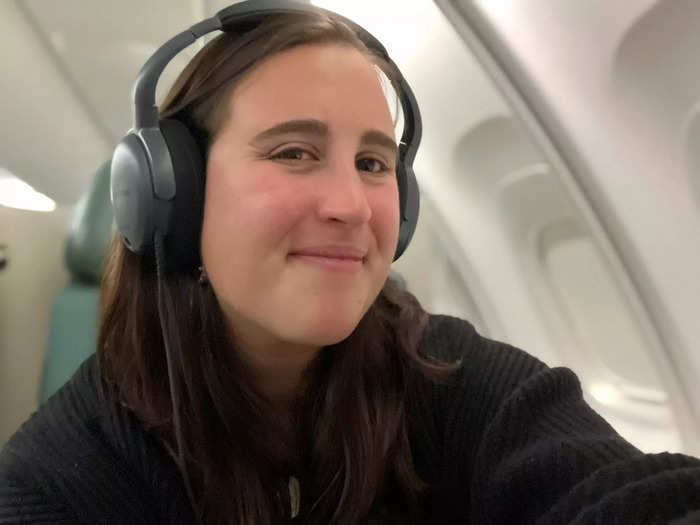
Before pushback, the flight attendants came around with a tray of drinks and a snack, so I enjoyed a glass of orange juice and trail mix before heading out to the runway.
We took off right on time and the cabin crew was quick to start the meal service.
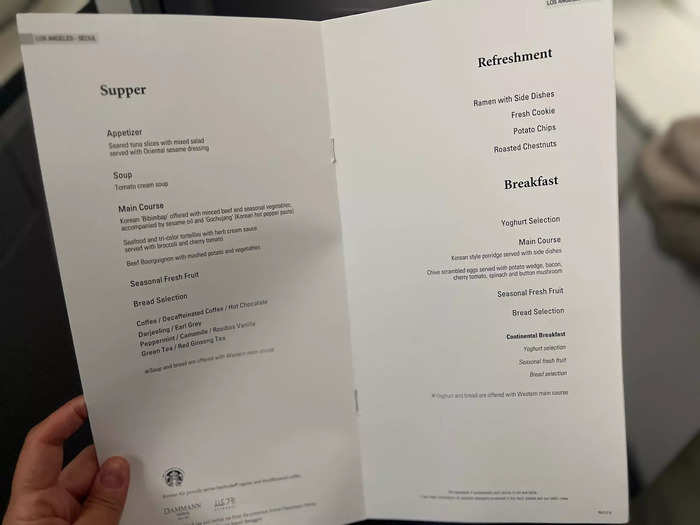
Considering this was an 11:30 p.m. flight, I was happy to see the flight attendants working hard to get everyone their meals quickly as they knew most of us wanted to sleep.
For both meals, I opted for traditional Korean dishes — the first being bibimbap for dinner.
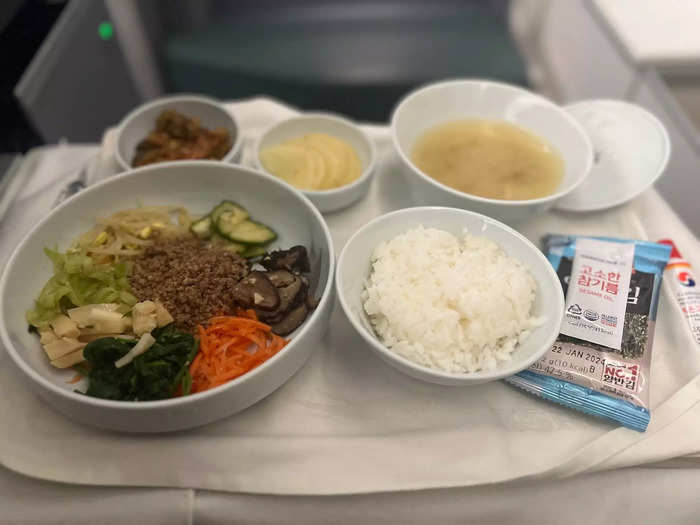
The bibimbap came with minced beef, vegetables, sesame oil, and "gochujang," which is a hot pepper paste.
The Korean-style porridge was served with green onions, radishes, and other side dishes.
I really liked the bibimbap, and the flight attendant showed me the best way to enjoy it since I had never tried the dish before.
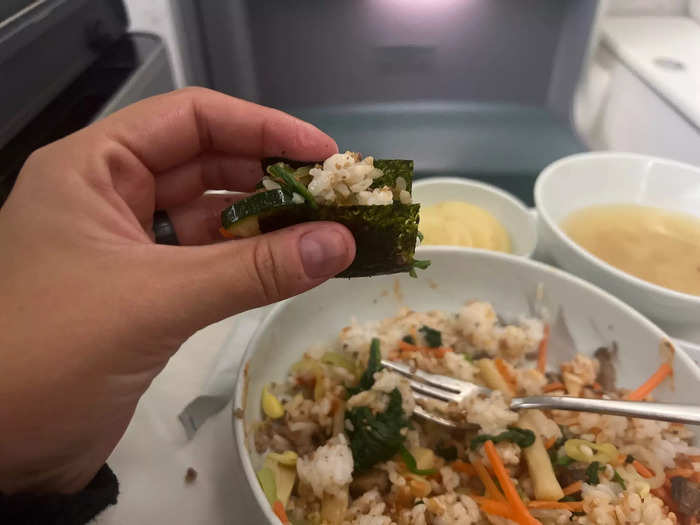
I'm not sure if I was supposed to wrap it in the seaweed, but I thought it tasted really good this way.
The other options onboard my specific flight were seafood with broccoli and cherry tomatoes or beef Bourguignon with mashed potatoes and vegetables.
We were also served seared tuna salad as an appetizer, with fruit being offered for dessert — both were as delicious as expected.
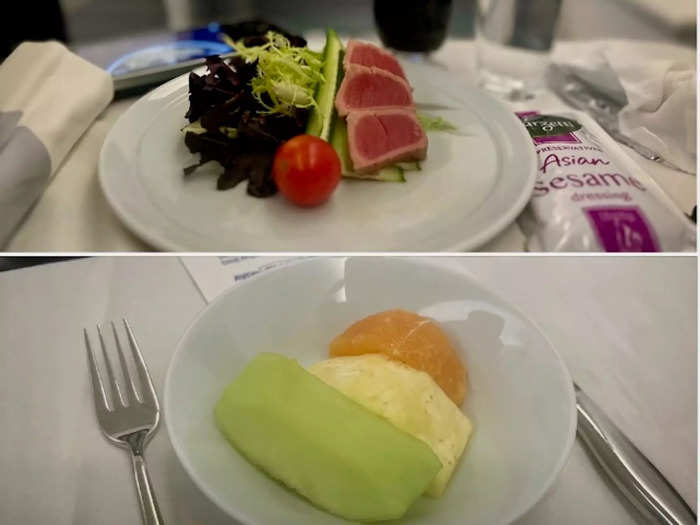
I've noticed that seared tuna is a popular appetizer for business class, with fruit being a common substitute for a sweet dessert.
After eating, I headed to the lavatory to get ready for bed and was happy to see it clean and stocked with toiletries.

I visited the lavatory three times during the flight and each time the floors were void of any loose paper, the bins were emptied, and the toiletries were restocked.
This was a nice change from the gross bathroom I found on United Airlines' Boeing 767 in August.
I was fast asleep soon after, snoozing for about six of the 12-hour hours between Los Angeles and Seoul thanks to the seat's comfortable lie-flat bed.
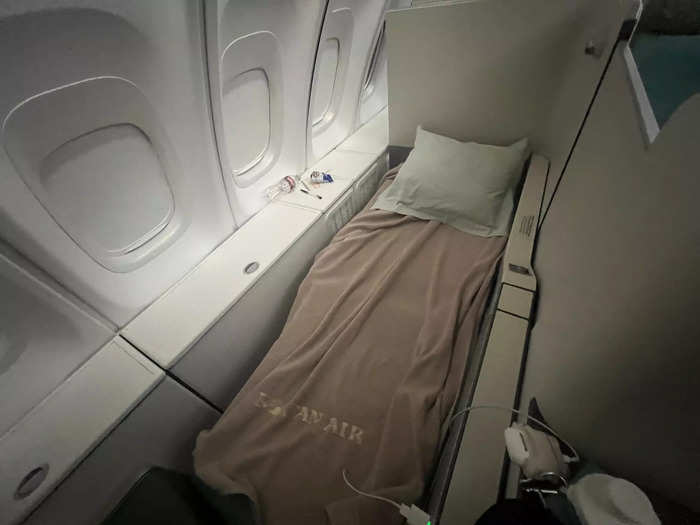
When laying fully flat with my head on the pillow, my feet were not touching the end, so I felt I had plenty of space to spread out.
The thick blanket and plush pillow also helped, though the bed was also nicely padded and I didn't wake up stiff or sore.
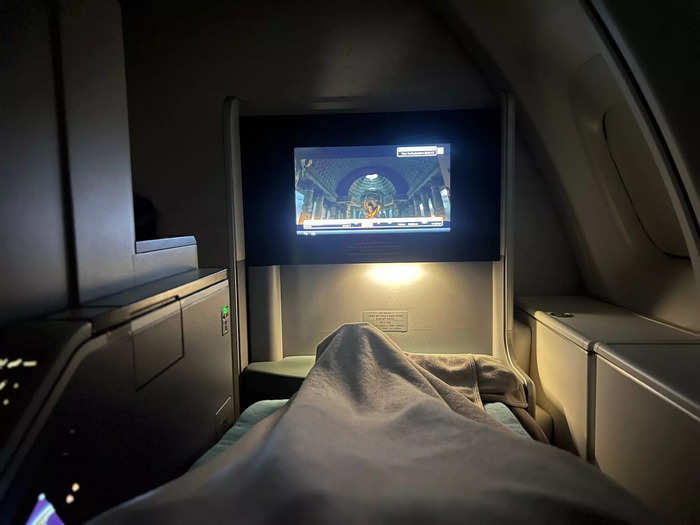
I did like the bed, but it was definitely smaller than the ones on both Singapore and ANA — both of which also provided a base layer over the seat for added comfort.
Moreover, I loved that I could raise the partition between me and my aisle-seat neighbor — fully cocooning myself into complete privacy.
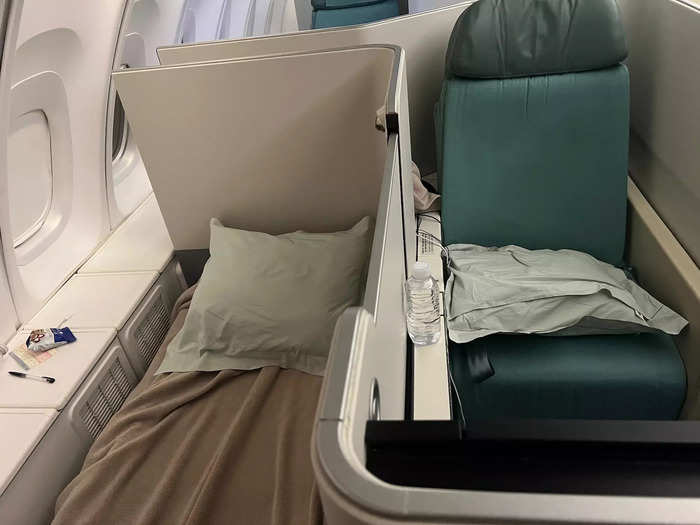
The partition was controlled by a simple button on the seat.
While the aisle seat passengers can enjoy the privacy of the partition, they are not fully sealed off from the rest of the cabin due to the lack of a privacy door.
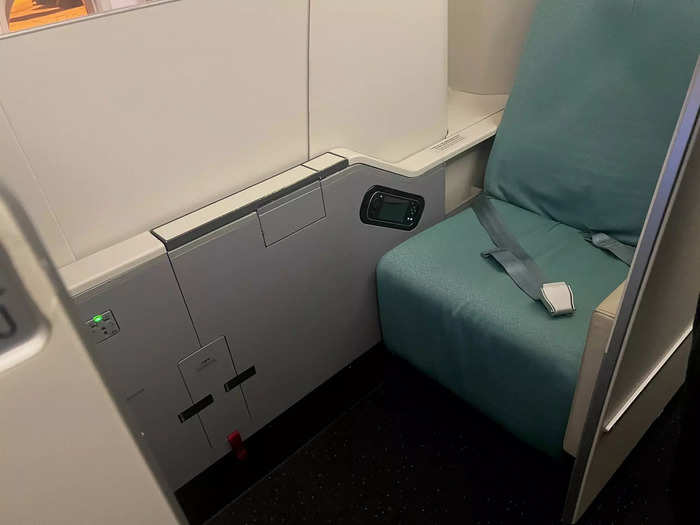
However, the staggered nature of the cabin means the seats are still private enough — though I'd definitely fight for a window seat if I were to ever fly Korean Air's Prestige cabin again.
About three hours from landing the flight attendants woke the cabin up for the second meal service, and I opted for the Korean-style porridge.
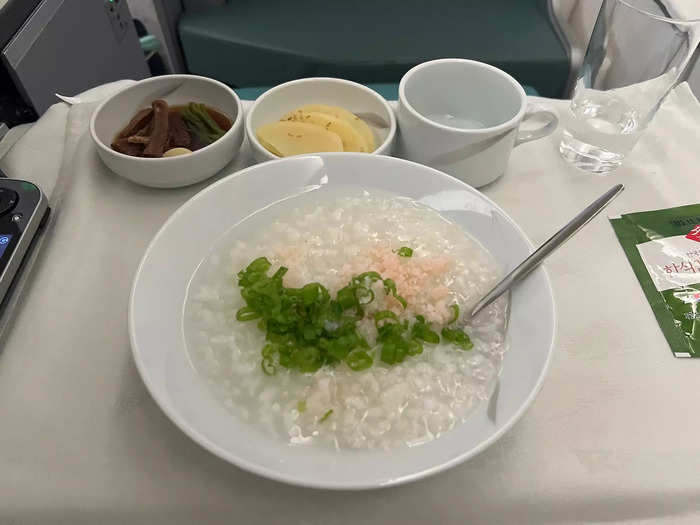
I could have opted for the eggs, potatoes, and bacon option instead. Fruit and bread were also served.
Crew members were also regularly coming through the cabin with offers like tea, coffee, water, and wine.
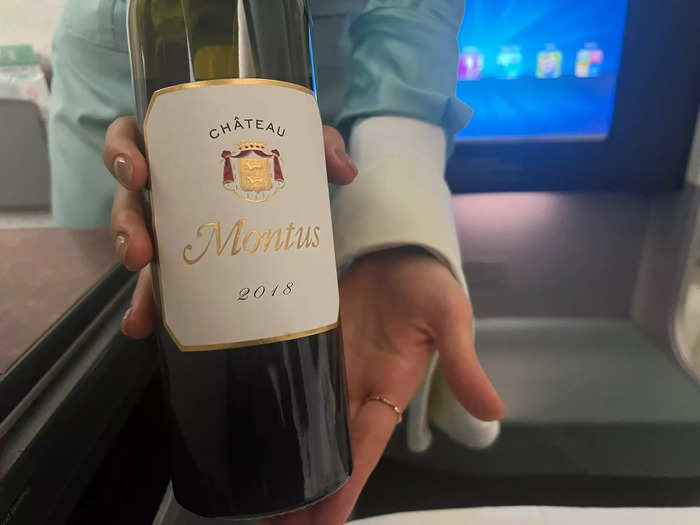
Passengers could also request other refreshments throughout the duration of the flight, like a ramen bowl, chips, roasted chestnuts, or a cookie.
Overall, I had a very good experience in Korean's Prestige business class — and being on the iconic 747 definitely elevated that joy.
While the 747 offered major nostalgia, the product itself sold me. I particularly liked the staggered design and the innovative walkways and appreciated the ample storage space.
It truly felt like flying private due to the cocooned seat and the exclusivity of being on the 747's upper level.
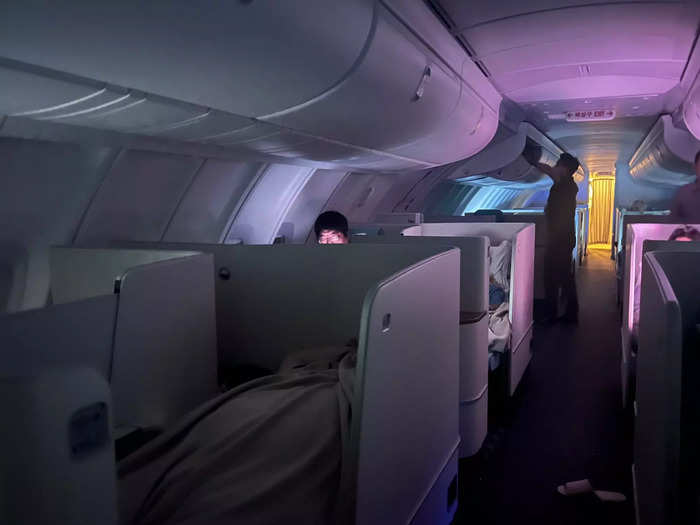
When standing at the front lavatory looking towards the back of the plane, I could see the curtain that separates the aft cabin galley.
This made it feel like that's all there was to the jet — just me, the flight attendants, and a few other passengers around.
I even had a set of four windows to myself, furthering that feeling of being on a private plane.
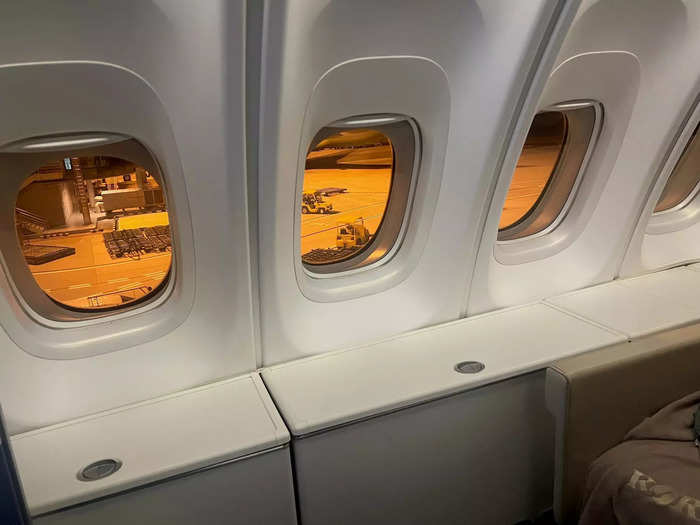
Private jets like the Gulfstream and the Bombardier boast huge windows to create a sense of space and openness onboard — the same shining true for Korean's 747.
In fact, it was actually hard to wrap my head around the fact that there were another 300+ people below me all also heading to Seoul on the same plane.
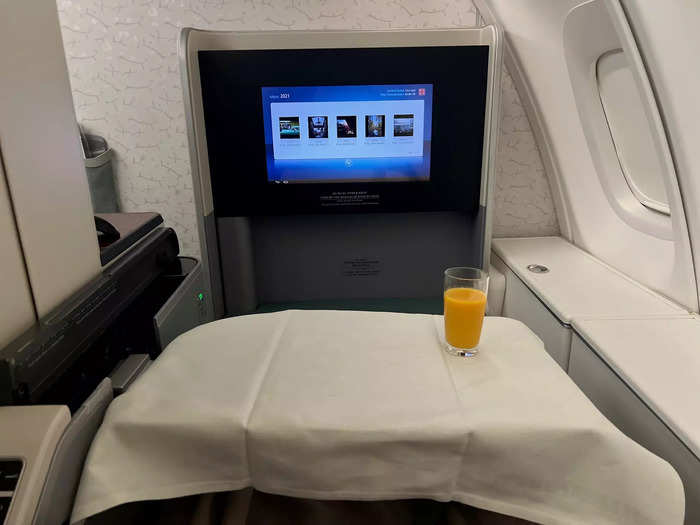
The 747 is massive, and its iconic little hump has been a hotspot for luxurious products over the years, like bars and lounges.
My only significant complaint was there was no WiFi onboard, meaning there was really no way to communicate with people on the ground.
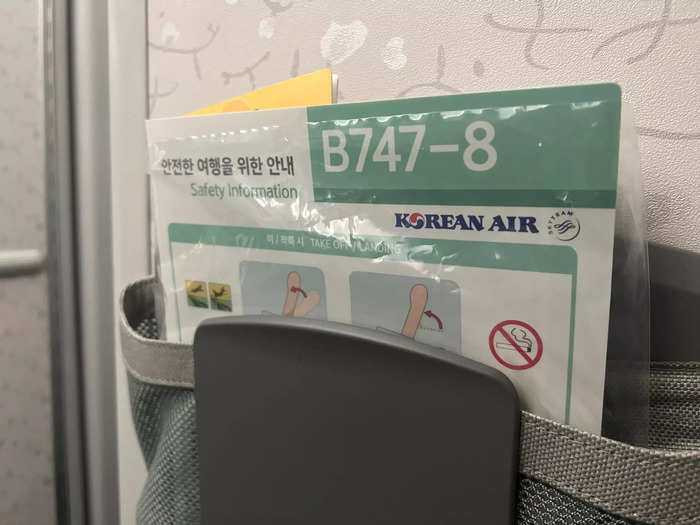
This means business travelers shouldn't expect to get any online work done when flying on the 747 to Seoul.
Fortunately, the red-eye flight meant I slept more than I worked and I personally didn't need it. Though, I'd imagine some travelers could be disappointed.
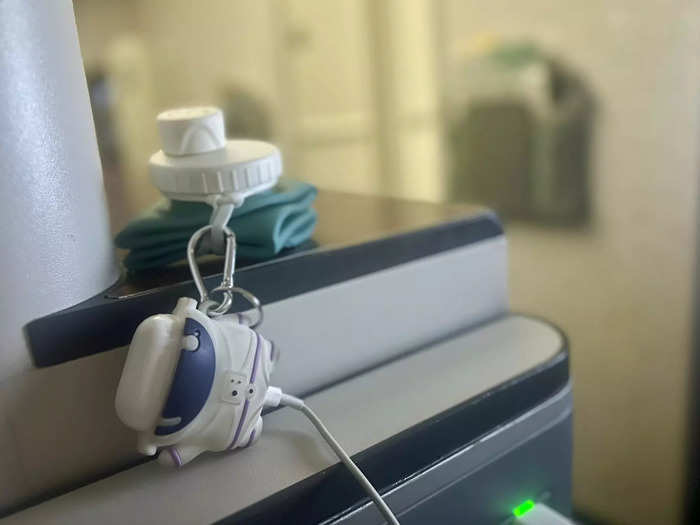
Popular Right Now
Popular Keywords
Advertisement